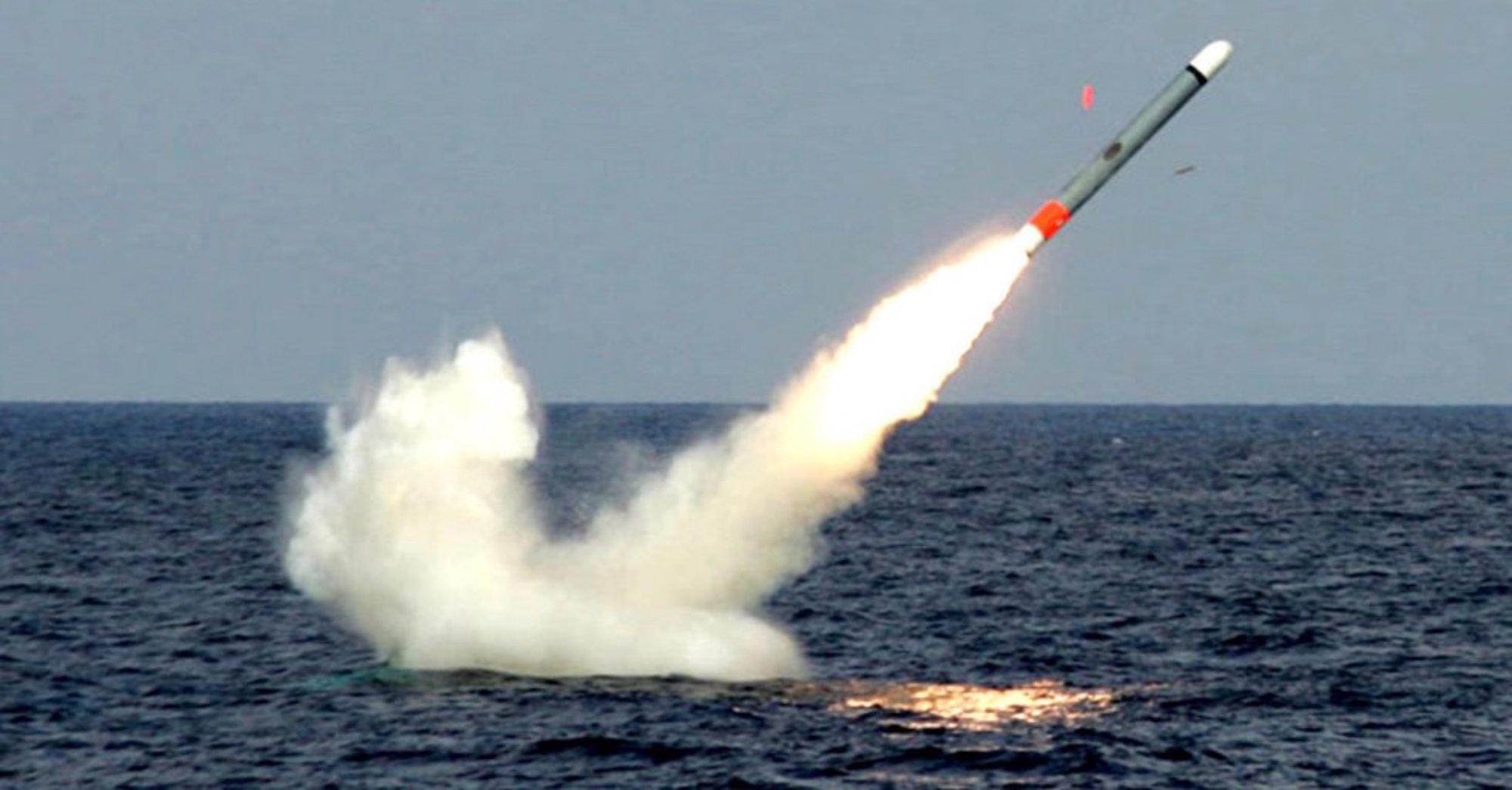Table Of Content
- North Korea says it has tested submarine-launched cruise missiles
- About MBDA’s Naval Cruise Missile
- The Straits Times
- Kings Bay Naval Submarine Base
- North Korea tests submarine-launched cruise missiles, KCNA says
- North Korea Launches Cruise Missiles from Sinpo-Class Submarine
- AUKUS Underwater Capability Developments Target Torpedo-tube UUV System

Once all those stars align, the missile finally streaks toward its deadly destination.
North Korea says it has tested submarine-launched cruise missiles
Amid rising tensions with Tehran and its proxies, the United States is sending a message by openly deploying one of its few guided missile submarines to the region. Missile-firing submarines would also add a maritime threat to the North’s growing collection of solid-fuel weapons fired from land vehicles that are designed to overwhelm the missile defenses of South Korea, Japan and the United States. North Korea’s official newspaper Rodong Sinmun published photos of what appeared to be at least two missiles fired separately. Both created grayish-white clouds as they broke the water surface and soared into the air at an angle of around 45 degrees, which possibly suggests they were fired from torpedo launch tubes.
North Korea's Kim Oversaw Test of Cruise Missiles Launched From Submarine: State Media - Voice of America - VOA News
North Korea's Kim Oversaw Test of Cruise Missiles Launched From Submarine: State Media.
Posted: Sun, 28 Jan 2024 08:00:00 GMT [source]
About MBDA’s Naval Cruise Missile
By 1953 the USS Tunny had been adapted into a true missile submarine, but firing the Regulus cruise missile was still an awkward process. The submarine had to surface, then the missile was manually loaded from storage onto a launch rail on the submarine's deck before it could fire. During the whole process, the surfaced submarine was visible and vulnerable to attack by enemy aircraft.
The Straits Times
This puts all of the regime’s military sites, military industrial facilities, and other targets in the south and east within striking range, as well as some of its main nuclear sites. Although the TLAM-E does not have significant hard-target penetration capabilities, its multi-effect programmable warhead still allows for some degree of “bunker busting,” especially when several missiles hit a single point sequentially. Typically, U.S. submarine deployments are not announced in advance, especially when the vessels are entering a potentially hot zone of operation that may require them to rely on stealth, their main operational advantage. Yet conventionally armed guided missile submarines are an exception—their presence is occasionally made known as a show of deterrence. Naval Forces Central Command announced on April 8 that the USS Florida (SSGN-728) had been deployed to the Middle East “to help ensure regional maritime security and stability.” The Florida is one of only four guided missile/special forces submarines in U.S.
North Korea tests new 'super-large warhead' and anti-ship missile - The Japan Times
North Korea tests new 'super-large warhead' and anti-ship missile.
Posted: Sat, 20 Apr 2024 02:31:00 GMT [source]
Like an old-time sailor, this sensor gets a location fix by measuring the position of the stars to provide fine detail correction. This correction may be needed because theorientation of the submarine may not be precisely known at launch. A compass can be thrown by magnetic disturbances, and conditions at Earth's poles (where subs sometimes operate) don't help things either. Even odd gravitational anomalies may be great enough to throw the missile miles off course, so missiles—as well as Navy seamen—are well-versed in reading the stars. According to a recent leaked report, a British Trident missile launched off the coast of Florida in June 2016 as part of a testing program was supposed to head east toward a target site near Africa.

The Royal Navy's latest botched test has only renewed calls from nuclear opponents who would like to see these destructive monsters of the deep retired completely. But as long as nuclear weapons exist, it's likely that that the Trident is going anywhere anytime soon. The remaining rocket stages still need to ignite, separate, and remain on the correct trajectory. The missile slows down as it leaves the water and gravity tries to pull it back down. Motion sensors monitor the changes as the missiles hang in the air for a brief moment before the first of three rocket stages ignites.
North Korea Launches Cruise Missiles from Sinpo-Class Submarine
This trial launch coincided with the beginning of the large-scale exercise “Freedom Shield” between South Korea and the United States. Ahead of this exercise, South Korea has revealed that it carried out another exercise named “Teak Knife” with USFK (United States Forces Korea) forces which mainly focused on practicing precision strikes on North Korea’s secretive nuclear facilities. Robert M. Soofer is a senior fellow in the Forward Defense program of the Atlantic Council’s Scowcroft Center for Strategy and Security, where he leads the Nuclear Strategy Project. He served as deputy assistant secretary of defense for nuclear and missile defense policy from 2017 to 2021. Finally, senior US military leadership must stay focused on this project—and on achieving it in parallel with other projects.
AUKUS Underwater Capability Developments Target Torpedo-tube UUV System
The W80-4 warhead, now under development by NNSA for the LRSO, could be adapted for use in the SLCM-N. The decision to reintroduce the SLCM-N was not taken lightly in the 2018 Nuclear Posture Review; it was evaluated for need, cost, the burden on the US Navy, and how it might affect other nuclear modernization programs then underway. The expansion of Russian and Chinese regional nuclear forces made this decision necessary. Russia maintains about two thousand “tactical” nuclear weapons that can be deployed on land, at sea, and delivered by aircraft. China possesses about one thousand regional missiles that can be armed with conventional or nuclear warheads. None of these weapons are limited by treaty, and they far exceed US regional nuclear capabilities—a disparity noticed by US allies.
Oscar-class submarine
RGM / UGM-109D (Block III TLAM-D) is a submunitions dispenser variant armed with 166 combined-effects bomblets. There was scepticism over the real-world utility of such a vessel, especially compared to the more advanced land-based missile systems, because its diesel propulsion generates noise and is limited in range, according to weapons experts. Converted Ohio-class submarines are also equipped with a thirty-ton dry deck shelter. This gives them the ability to deliver and recover SEAL commando teams on clandestine missions using submersibles or small boats. These clashes coincided with a series of Israeli standoff precision airstrikes against IRGC and Hezbollah targets in Syria beginning on March 30.
North Korea’s cruise missiles are typically more controversial and are not explicitly banned under United Nations Security Council resolutions. Raytheon received a $122m contract from the US Navy in March 2015 for the production of 114 Tomahawk Block IV all-up round missiles. Raytheon conducted an active seeker test flight for the Tomahawk Block IV cruise missile in January 2016. The Tomahawk family of missiles includes a number of variants, carrying different warheads. After two years of debate with the Biden administration, it passed, on a bipartisan basis, the National Defense Authorization Act for Fiscal Year 2024 with instructions to begin the SLCM-N program and achieve operational capability of the SLCM-N by 2034. According to media reports quoting U.S. defense officials, suspicious Iranian drone activities in the Gulf of Aden, Arabian Sea, and Red Sea spurred the U.S.
The 2,000th Tomahawk Block IV missile was delivered to the US Navy in February 2010. Coincidentally, ‘8.24 Yongung’ was the very submarine to test launch North Korea’s first SLBM Pukguksong-1 back in August 2016. Congress and the Department of Defense must now work together to see the project through to completion.
He said then that the country was pursuing a nuclear-propelled submarine and that it plans to remodel existing submarines and surface vessels so they can handle nuclear weapons. In recent years, North Korea has tested a variety of missiles designed to be fired from submarines as it pursues the ability to conduct nuclear strikes from underwater. In theory, such capacity would bolster its deterrent by ensuring a survivable capability to retaliate after absorbing a nuclear attack on land. At the end of the 1950s, weapons systems still had yet to master the tricky science of shooting a rocket through water. But technology was progressing quickly, and at the turn of the decade, the Navy developed the Polaris A1 Fleet ballistic missile.

No comments:
Post a Comment